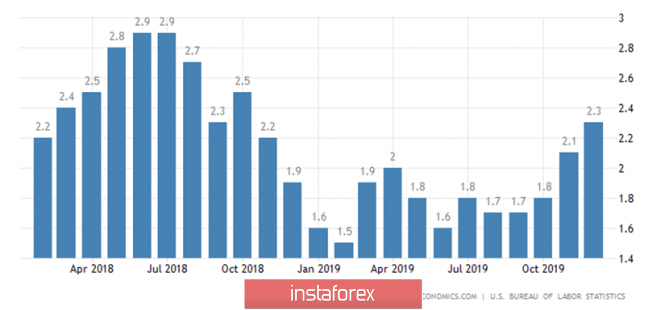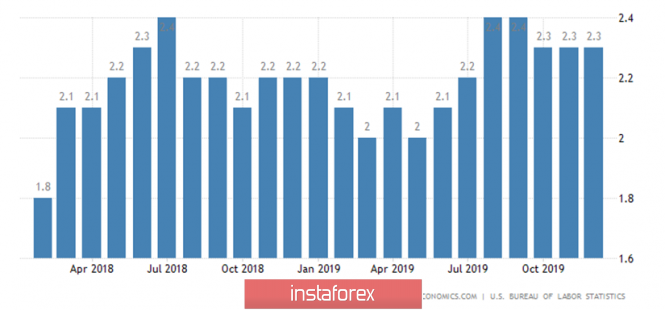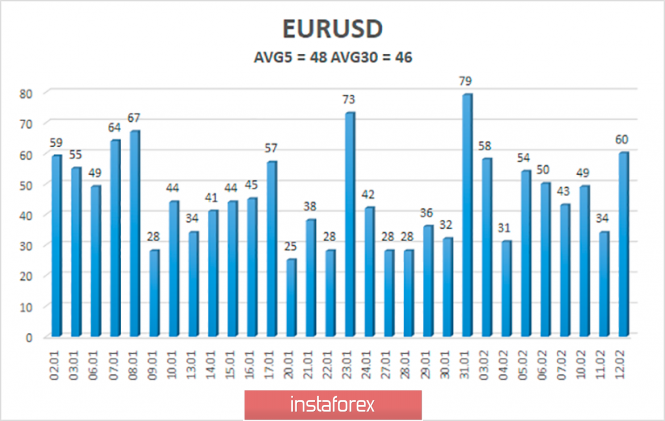4-hour timeframe

Technical details:
Higher linear regression channel: direction - downward.
Lower linear regression channel: direction - downward.
Moving average (20; smoothed) - down.
CCI: -136.8143
Well, the upward correction for the EUR/USD pair was purely symbolic. Several purple bars of the Heiken Ashi indicator gave hope for a move to the moving average line, however, the pair resumed its downward movement at yesterday's US session and worked out a two-year low of 1.0879. Thus, this level will not stand and the bears are simply tired of losing positions as soon as the price approaches the minimum values for two years. After all, the bulls have not managed to form anything similar to an upward trend over the past 15 months. This situation could not go on forever. Therefore, at the moment, a recoilless downward movement continues for the seventh day in a row. If yesterday there were no important and significant publications either in the European Union or in the United States, today there will be important releases form both. Thus, on Thursday, the euro will again have some chances to start correcting. However, we recommend that traders do not try to catch or anticipate a correction but stay in sell positions until there are eloquent signals about the turn of the corrective movement.

The consumer price index in Germany will be published first. According to experts' forecasts, inflation in January will remain unchanged - 1.7% y/y. This is not such a low value, given that the consumer price index threatened to fall below the 1% mark a few days ago. However, we do not see why the indicator will continue to accelerate if all the key indicators of the state of the German economy and the entire European Union continue to have a tendency to fall. By the way, a value of -0.6% is expected in monthly terms, which clearly will not be able to please traders. Thus, the annual indicator may turn out to be lower than the forecasted values. However, we will not bury this report ahead of time.

The second and more significant release of the day will be inflation for January in the United States. In 2019, the US consumer price index was mostly below the 2.0% y/y mark. However, in late 2019 to early 2020, it began to accelerate and now stands at 2.3% y/y, which can not but please the Fed, as well as investors in the US currency. Today, it is expected that the official release will record an even greater acceleration in inflation, up to 2.4% y/y. In monthly terms, an increase of 0.2% is expected.

Also today in the United States, inflation excluding food and energy will be published, which is considered even more important and significant. It is believed that food and energy prices are too volatile (a classic example is oil, which can become cheaper and more expensive due to changes in market conditions or due to various geopolitical conflicts). Thus, excluding these two categories, we get a more accurate indicator of inflation, which shows that in the last 5 months, the level of 2.3% y/y has been consistently reached. And over the past two years, this rate of inflation has only fallen below the level of 2.0% once. Thus, it is food and energy that are the reasons why the main inflation indicator (the one for which the Fed is aiming for a stable 2%) cannot show a stable "2% or higher" for a long time.
There will be no other macroeconomic data today. As for possible movements in the euro/dollar pair on February 13, given the seven-day drop in euro quotes, it is possible that traders will ignore both inflation reports and continue selling. Therefore, as before, we recommend paying close attention to the Heiken Ashi indicator or any other "fast" indicators that can react to a reversal in time. If the US inflation report turns out to be weak, this may trigger a round of upward correction. German inflation does not have such an impact on the foreign exchange market, so it is interesting only in the context of forecasting the future rate of inflation throughout the European Union.
Well, from a technical point of view, everything is bad for the euro currency now. The last hope is that a rebound will occur from the area of two-year lows, and the notorious "paradoxical situation" will play. However, it seems that this time the pair will confidently update the lows and continue moving towards price parity in the long term.

The average volatility of the euro/dollar currency pair increased to 48 points per day. The correction ended very quickly. Thus, on Thursday, we expect movement between the borders of the volatility range of 1.0824-1.0920. It is pointless to expect a correction before the new turn of the Heiken Ashi indicator up.
Nearest support levels:
S1 - 1.0864
S2 - 1.0803
S3 - 1.0742
Nearest resistance levels:
R1 - 1.0925
R2 - 1.1047
R3 - 1.1108
Trading recommendations:
The euro/dollar pair resumed its downward movement. Thus, sales of the euro currency with the targets of 1.0864 and 1.0824 remain relevant now, which can be kept open until the Heiken Ashi indicator turns up. It is recommended to buy the EUR/USD pair not before the bulls cross the moving average line, which will change the current trend to an upward one, with the first target of 1.0986.
In addition to the technical picture, you should also take into account the fundamental data and the time of their release.
Explanation of the illustrations:
The highest linear regression channel is the blue unidirectional lines.
The lowest linear regression channel is the purple unidirectional lines.
CCI - blue line in the indicator window.
Moving average (20; smoothed) - blue line on the price chart.
Murray levels - multi-colored horizontal stripes.
Heiken Ashi is an indicator that colors bars in blue or purple.
Possible variants of the price movement:
Red and green arrows.
The material has been provided by InstaForex Company - www.instaforex.com